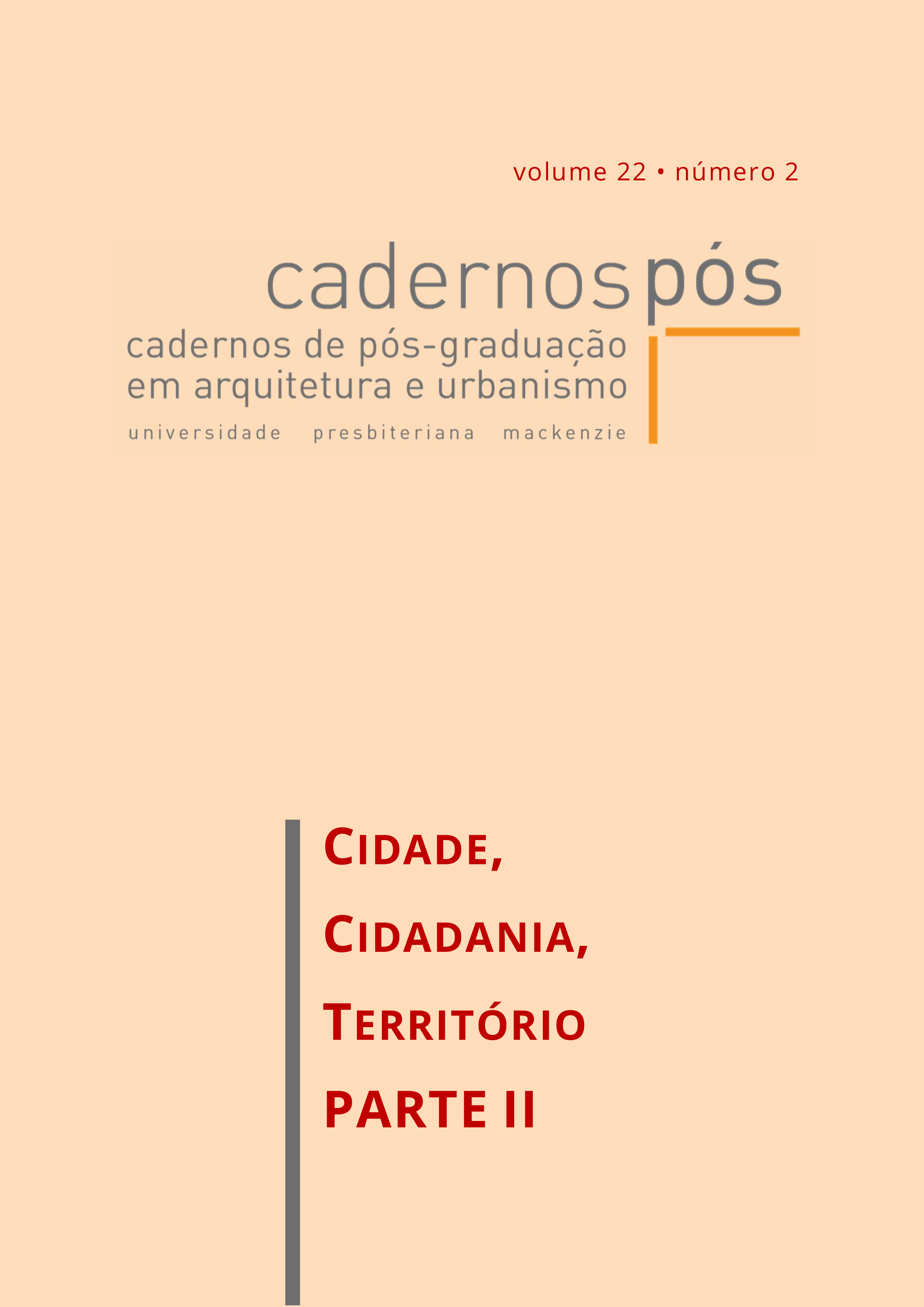The Self-building of family environments
between the affective place and discussion about technique
DOI:
https://doi.org/10.5935/cadernospos.v22n2p22-40Keywords:
Self-built housing; Popular housing; Ambiences; Affectivity.Abstract
This paper has its origin in a doctoral research, in progress, whose methodological development led to a didactic activity developed with students of the Architecture and Urbanism program from a private higher education institution in the city of Rio de Janeiro. The debate, carried out in the classroom, about the topic of popular self-built housing and technical assistance, eventually became an analytical stage of the thesis and a research that generated a project presented at the institution, during the Research and Extension Week. The students involved in this focus group live, without exception, in self-built housing on lots with more than two houses, located in the suburbs of Rio de Janeiro and the surrounding municipalities of the Baixada Fluminense – a very common reality in the context of urbanization of Brazilian cities. As a focus group, the Architecture students and young architects were invited to reflect on certain categories of the social layer, building process, and affective relationships. The meetings took place on a weekly basis, remotely. Through these meetings, narratives, graphic material, and possible answers were extracted for the inter-relationships between the grade of affectivity and the frequency of changes/additions to buildings.
Downloads
References
AUDAS, N.; AUGOYARD, J. F. Le rôle de l’affect dans lambience ressentie. In: 1st INTERNATIONAL CONGRESS ON AMBIENCES, 1., Grenoble, 2008, France. À la Croisée, p. 213-219, 2011, Ambiences. Disponível em: https://halshs.archives-ouvertes.fr/halshs-00833921. Acesso em: 20 jun. 2020.
BACHELARD, G. A poética do espaço. São Paulo: Câmara Brasileira do Livro, 1984. (Os Pensadores).
BRASIL. Ministério das Cidades. Experiências em habitação de interesse social no Brasil. Organização Eglaísa Micheline Pontes Cunha, Ângelo Marcos Vieira de Arruda e Yara Medeiros. Brasília, DF: Ministério das Cidades, Secretaria Nacional de Habitação, 2007.
DUARTE, C. R.; VILLANOVA, R. Novos olhares sobre o lugar: ferramentas e métodos, da arquitetura à antropologia. Rio de Janeiro: Faperj, 2013.
FARINA, M. A.; BARBOSA, R. F. Programa & evento – ou o evento do programa, uma questão de conceituação. In: PROJETAR, 6.. São Paulo: Faculdade de Arquitetura e Urbanismo da Universidade Presbiteriana Mackenzie, 2009. Disponível em: https://www.academia.edu/4128676/Programa_ and_Evento_ em_Tschumi. Acesso em: 20 fev. 2021.
FISCHER, G. N. Psicologia social do ambiente. Lisboa: Instituto Piaget, 1994.
GATTI, B. A. Grupo focal na pesquisa em ciências sociais e humanas. Brasília, DF: Autores Associados, 2005. (Pesquisa em Educação).
HOUAISS, A. Dicionário Houaiss da língua portuguesa. Rio de Janeiro: Objetiva, 2001.
MARICATO, E. (org.). Autoconstrução, a arquitetura possível: a produção capitalista da casa (e da cidade) no Brasil industrial. São Paulo: Alfa Ômega, 1982. p. 71-93.
MORAIS, A. C. R. Ratzel. São Paulo: Ática, 1989.
MOSCOVICI, S. A representação social da psicanálise. Rio de Janeiro: Zahar, 1978.
PALLASMAA, J. Habitar. Tradução e revisão técnica Alexandre Salvaterra. [s. l.]: Gustavo Gili, 2017.
PINHEIRO, E. et al. De perto e de dentro: aproximando desenho e história(s). V!RUS, São Carlos, n. 20, 2020. Disponível em: http://www.nomads.usp.br/ virus/virus20/?sec=4&item=15&lang=pt . Acesso em: 17 fev. 2021.
POWELL, R.; SINGLE, H. Focus groups. Internacional Journal of Qualit in Health Care, v. 8, n. 5, p. 499-504, 1996.
RHEINGANTZ, P. A. et al. Observando a qualidade do lugar: procedimentos para a avaliação pós-ocupação. Rio de Janeiro: Faculdade de Arquitetura e Urbanismo da Universidade Federal do Rio de Janeiro, 2009. (Proarq).
SANTOS, M. A natureza do espaço: técnica e tempo, razão e emoção. São Paulo: Edusp, 2006. (Milton Santos).
THIBAUD, J. P. A cidade através dos sentidos. Cadernos PROARQ, n. 18, 2012.
THIBAUD, J. P. Petite archeólogie de la notion d’ambience. Communications, v. 90, n. 1, p. 155-174, 2012.
THIBAUD, J. P. et al. Comment observer une ambiance? Les Cahiers de la recherche architecturale et urbaine. Ambiances Architecturales et Urbaines, Paris, n. 42-43, p. 77-90, 1998.
TUAN, Y. F. Espaço e lugar: a perspectiva da experiência. Tradução Lívia de Oliveira. São Paulo: Difusão Editorial (Difel), 1983.
TUAN, Y. F. Topofilia: um estudo da percepção, atitudes e valores do meio ambiente. São Paulo: Difusão Editorial – Difel, 1980.
WAGNER, S. G.; DUARTE, C. R. A ambiência peculiar do lugar quintal nas residências da Zona Norte do Rio de Janeiro. Revista Interfaces, v. 1, n. 22, p. 89-96, 2015.
Downloads
Published
How to Cite
Issue
Section
License
Authors who publish in this journal agree to the following terms:
a) Authors retain the copyright and grant the journal the right of first publication, with the Project simultaneously licensed under the Creative Commons Attribution License that allows the sharing of the Project with recognition of the authorship and initial publication in this journal.
b) Authors are authorized to assume additional contracts separately for the non-exclusive distribution of the version of the Project published in this journal (e.g., publishing in an institutional repository or as a book chapter), indicating that it was originally published in this journal, with a link to the article.








 Todo o conteúdo de Cadernos de Pós-Graduação em Arquitetura e Urbanismo está licenciado sob
Todo o conteúdo de Cadernos de Pós-Graduação em Arquitetura e Urbanismo está licenciado sob 